Breakthrough for mobility?
As we battle through a new phase of the pandemic – bold enough to imagine freedom at the end of the tunnel, yet still humbled by the trauma of months past – we can take a moment to peer beyond the immediate tragedy and scrutinize the broader landscape against which this drama is staged.
If timeliness and taste prevent us yet from speaking of silver linings, perhaps we can at least justify the early search for opportunities – for clues, in other words, to a better future.
Here’s just one. At a cursory glance, the impact of the virus appears to have paid the environment some unique favors.
During this time, as industry around the world has fallen silent and people have remained at home, hence energy demand has fallen sharply – down 6% year on year[1]. This is predicted to translate to a fall in CO2 levels of between 4%-8% this year, equivalent to 2-3 billion tons of greenhouse gases[2].
With transportation typically accounting for almost a quarter of global emissions (and with much of the World existing in varying degrees of lockdown) the biggest single contributor to this pollution decline is, unsurprisingly, curtailed mobility.
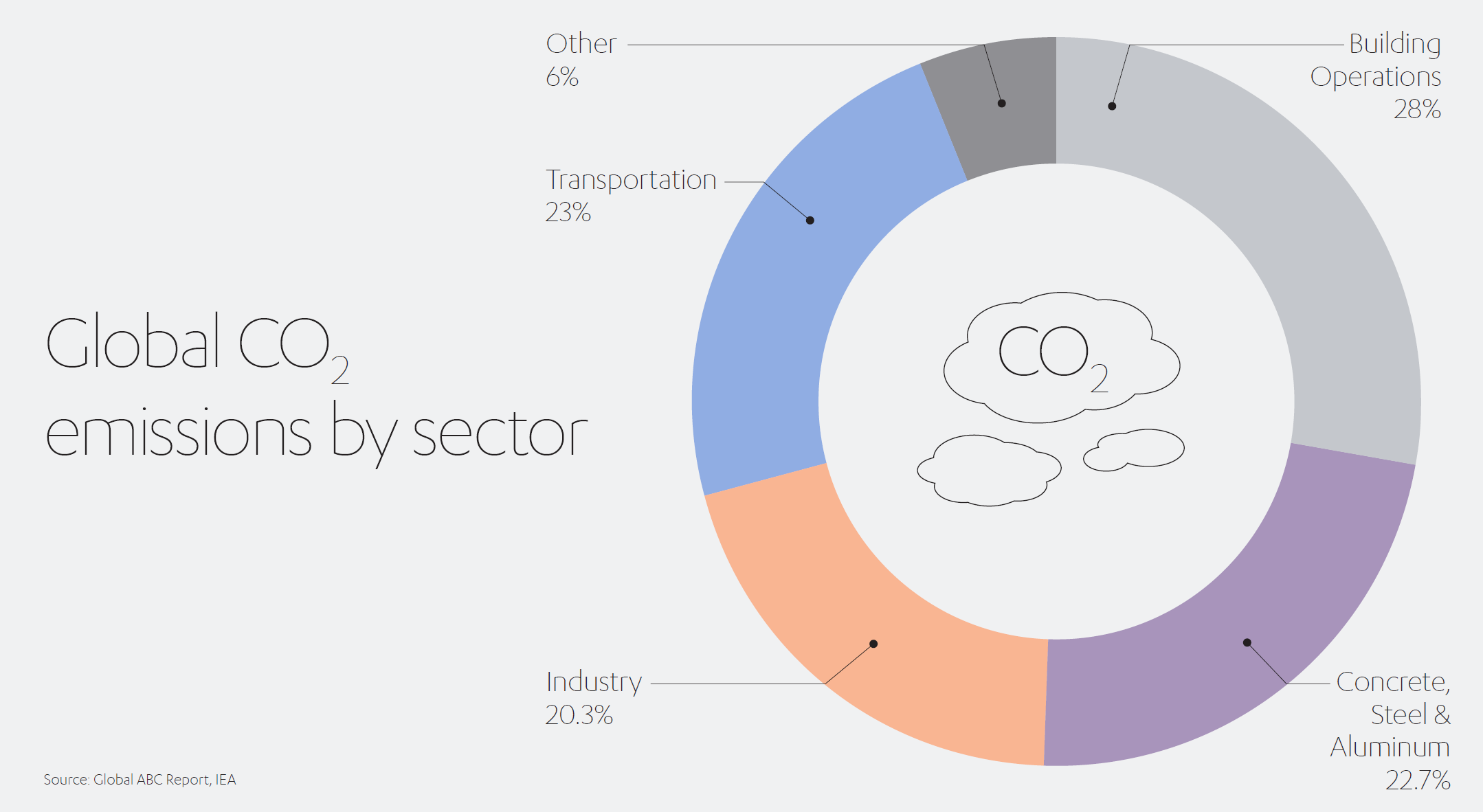
Data from the International Energy Agency (IEA) suggests road transport can claim much of the credit, dipping by almost half, globally, to the end of March[3]. During this period, researchers from Colombia University in the United States observed a 10% fall in carbon dioxide and a 50% drop in carbon monoxide in New York alone[4]. That same month, road miles travelled in the UK fell to levels not seen since the mid-1950s[5]. In cities across the world, a combination of legal restrictions and public apprehension saw journeys fall to a fraction of the norm.
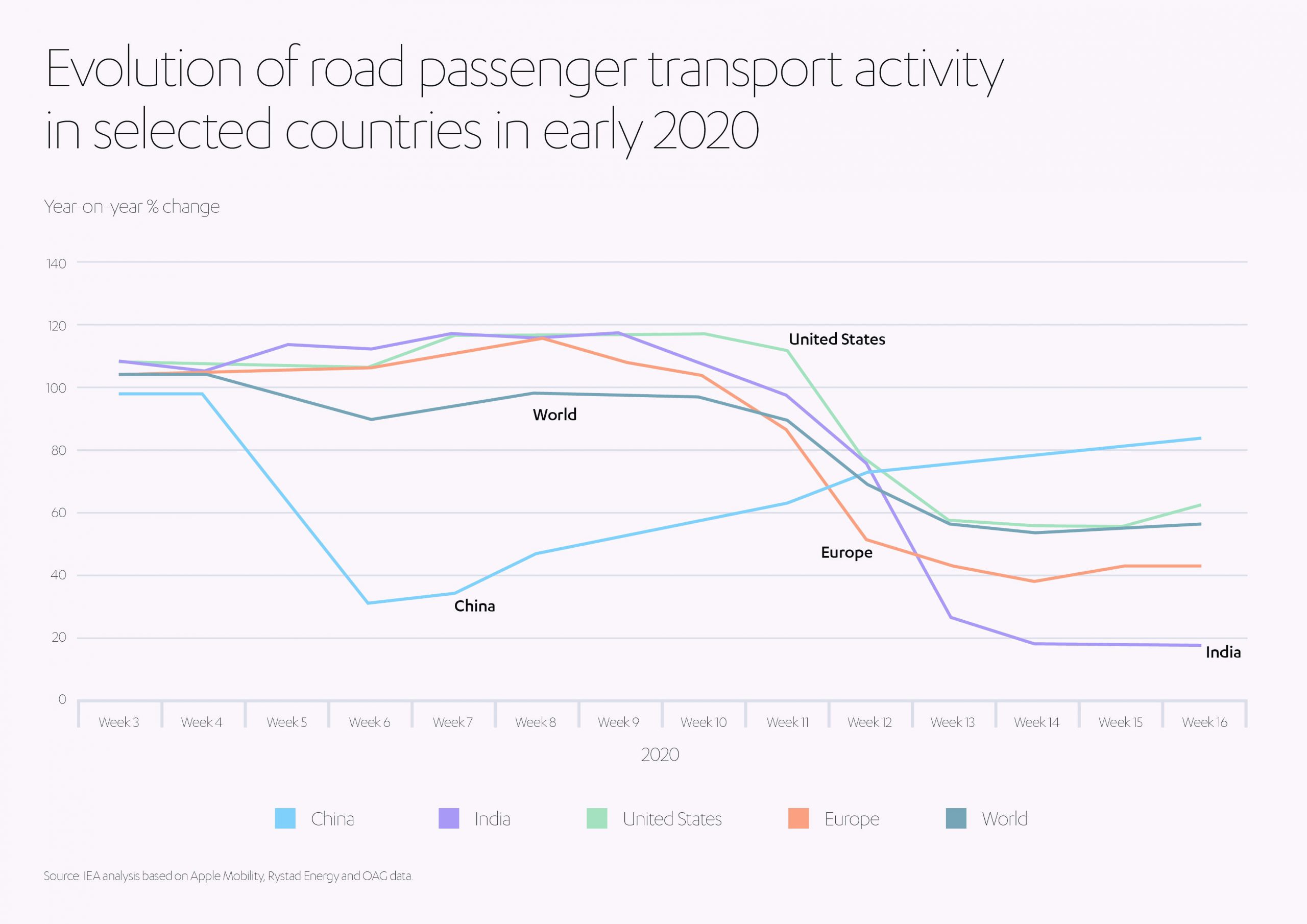
Air travel has likewise slumped. The IEA foresees flight passenger numbers declining by two-thirds in Q2 2020, then by 40% in Q3 and 10% in Q4, with demand for jet fuel and kerosene falling some 26% over the year as a whole[6].
These statistics might make sour reading for those working in the transport or fossil fuel industries, but for the rest of the World they mean benefits evident even on the briefest of strolls. Roads noticeably emptier of cars, skies free of planes, rail tracks conveying mere skeleton services. Bicycle sales doubled in the United States in March compared to the same period last year[7]. Elsewhere, waterways are running visibly clearer and wildlife is padding its paws into areas typically dominated by humans. Effects are tangible even from space, with satellites observing toxic clouds dissipating across multiple continents, from America to Europe to China[8].
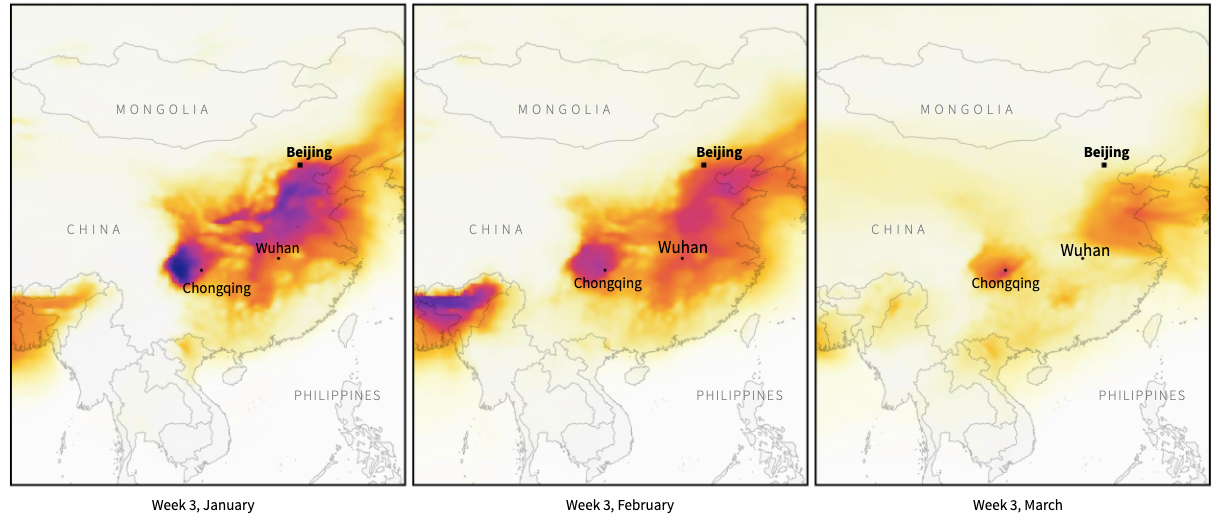
To spot the difference, maybe all you need do is draw a deep breath – a YouGov survey for the UK’s Guardian newspaper had two-thirds of respondents reporting cleaner, fresher air during lockdown[9].
So, surely it is a time to celebrate? With sufficient political and popular willpower, pollution trends can apparently be reversed in a matter of months. We all just need to be less mobile. Simple. Except … consider precedent.
Caution over magic bullet solution
There are several reasons why it would be foolhardy to drop our guard and slide into complacency. The World has undergone turmoil before (albeit with a different catalyst) and in the relatively recent past. The 2008 economic crisis, sparked by the bursting of the United States housing bubble and subsequent subprime mortgage crisis, cost global economies trillions of dollars. Then, as now, businesses closed, redundancies snow-balled and consumer spending plunged. Vehicle sales crashed. Transatlantic air travel fell by 15%[10].
However, the 1.4% carbon emissions drop in 2009 following the recession was ultimately offset by an almost 6% rise the following year. The environmental benefits, according to the Global Carbon Project, were short-lived “owing to strong emissions growth in emerging economies, a return to emissions growth in developed economies, and an increase in the fossil-fuel intensity of the world economy”.[11]
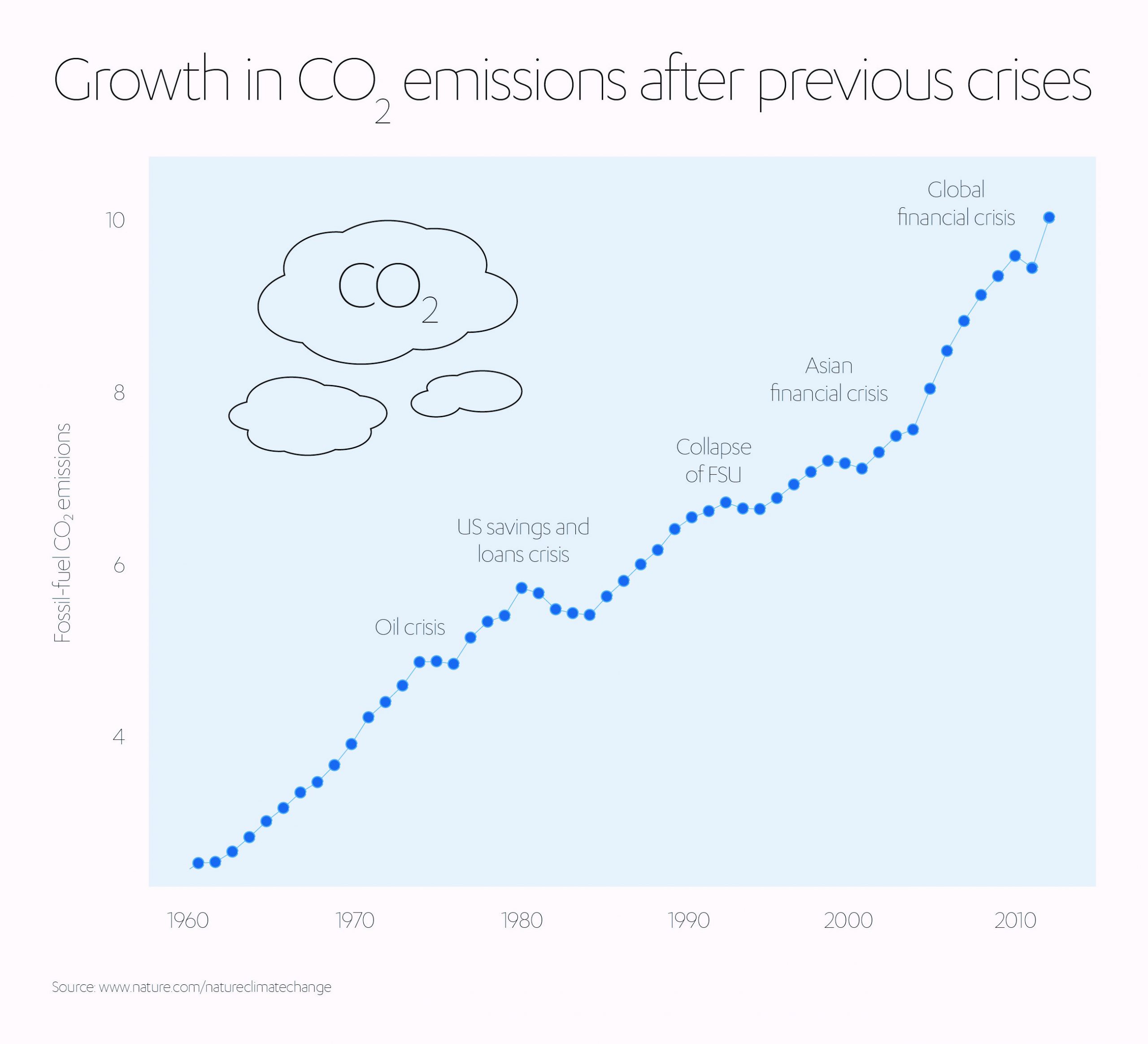
It has happened before; it can happen again.
There are further signs that a cut in mobility pollution cannot be taken for granted.
As global lockdowns gradually ease, there is already evidence of road traffic recovering – even surging.
As crowds steer clear of potential infection hotspots like buses and trains (with measures such as face-masks and compulsory health checks for passengers) China has actually seen vehicle use increase during the pandemic.
The proportion of journeys undertaken by private car has almost doubled, from 34% before the lockdown to 66% afterwards[12]. At the same time, bus/metro use has slipped from 56% to 24%. In a survey by market research giant Ipsos, almost three-quarters of Chinese respondents said they were more likely to buy a new car in the aftermath of the virus.
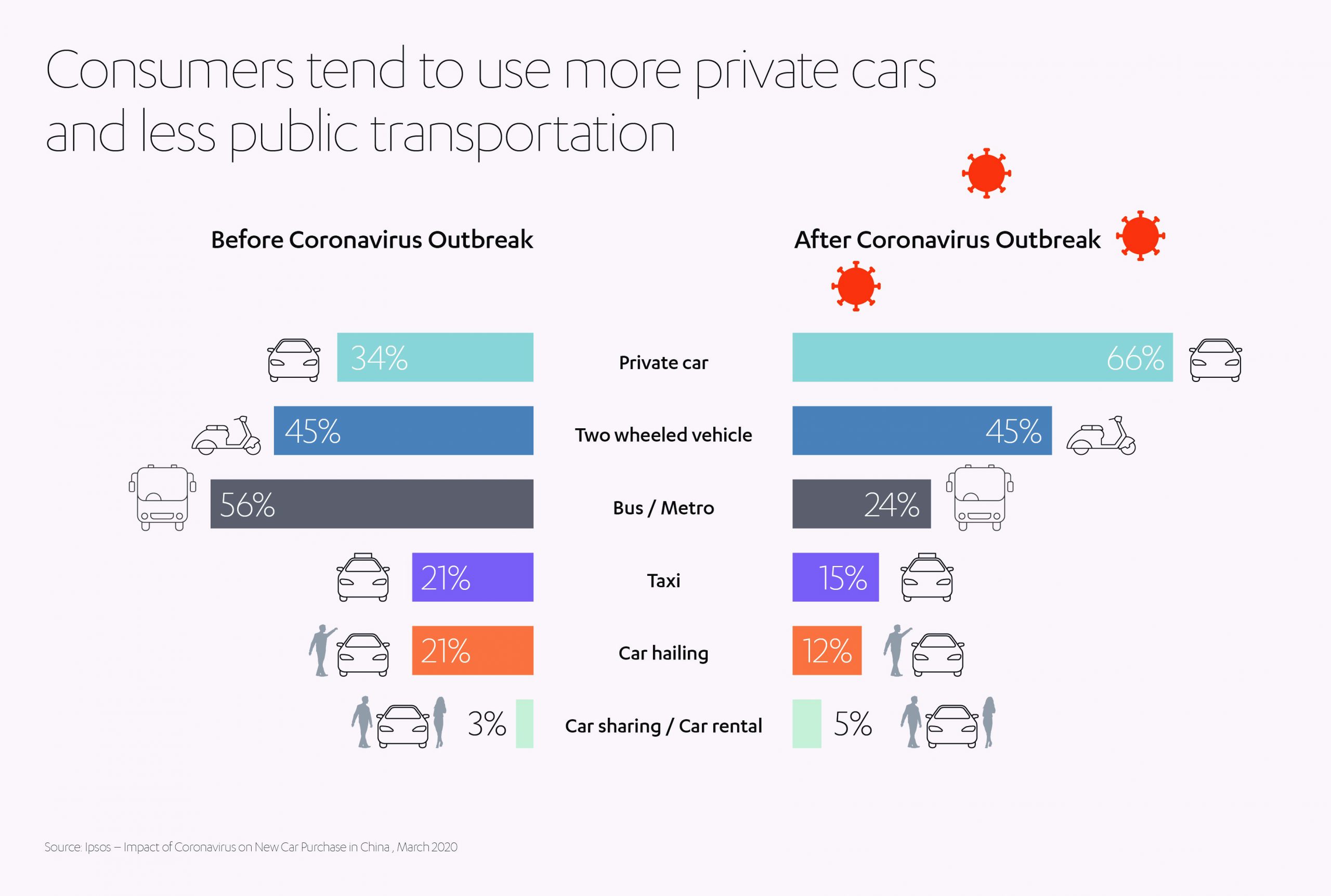
A similar picture is emerging in Stockholm, Sweden, while in London, UK, car usage rebounded to 78% of normal levels in June, having fallen to 50% in March[13].
Another problem exists at the level of infrastructure – nowhere more so than the United States. Map data shows many American communities simply aren’t designed for walking, lacking sidewalks entirely, despite good evidence that walkable communities with lower air pollution help safeguard against chronic conditions[14]. Even in the UK, more than two-thirds (around 70%) of UK pavements are less than three meters wide, making social distancing difficult if one pedestrian wishes to pass another[15].
So, if the vision of a clean-aired, car-free utopia remains largely hypothetical at present, what is the likely post-pandemic future of mobility, and what can we do to ensure it benefits the maximum number of people?
Seizing the moment to help green gain traction
While some countries will doubtless loosen regulations around car manufacturing to support struggling automobile industries, others will grasp the opportunity to capitalize on greener alternatives.
As a snapshot:
- Cities from Bogota, Colombia, to New York, USA, have closed tens of kilometers of roads to traffic during the crisis[16].
- In Milan, Lombardy the first European epicenter, some 35 kilometers of streets will be transformed over the summer into new cycling and walking havens[17].
- In the UK, ministers have announced a US$ 2.5 billion fund to promote walking and cycling, while an overwhelming 93% of Climate Assembly citizen panelists believe public and private sectors should align strategies with net-zero goals after lockdown[18].
- In France, Paris is providing 650 kilometers of so-called ‘pop-up’ cycle lanes, while mayor Anne Hidalgo has spoken of creating a ’15-minute city’, where all the facilities people need lie within a small radius of their homes, negating the need for much travel [19] [20].
Globally, if impacts on pollution and accident rates are as positive as expected, many of these urban mobility tweaks could, and perhaps should, remain in place once the pandemic passes – and they can gradually inspire wholesale redesigns of the urban transport landscape.
In Europe, for example, city officials from four different countries (Bonn in Germany, Brussels in Belgium, Dublin in Ireland and Milan in Italy) have urged the European Commission to establish a grant scheme for zero-emission buses as part of the EU’s recovery strategy.
The € 3.5 billion fund they are proposing would encourage a public transport resurgence among the cities’ combined 7.5 million inhabitants and, accordingly, ensure cleaner air for all[21].
They could well look to Gothenburg for inspiration. Sweden’s second-largest city is at the vanguard of the green transport wave, already boasting a climate-certified international airport, a zero-emission tram network and more than 1,000 public rental bikes.[22] Later in 2020, 157 new electric buses will take to the city’s street, bringing the fleet total to 220, supported by a network of 19 charge stations.[23] Now crowned a European Capital of Smart Tourism 2020 by the European Commission, its transformation is all the more impressive considering in the mid-1980s the former industrial port town was branded a “a courtyard to hell” by Sweden’s own environment minister, inspiring its green resurgence. Presently, 65% of Gothenburg’s public transport runs on renewable energy, with a plan to make it fully electric by 2030. [24]
If more cities are to board the public transport bandwagon, operators must consider how to tempt back apprehensive commuters. At the very least, public transport will require new seating configurations and strict passenger limits. Streamlining the flow of people might even entail building new stations and stops.
And that’s not all. We’ll also need technology, innovation and most importantly, vision.
Developing a smarter future
In pursuit of safer and more sustainable mobility, we’re destined to embrace a smarter public transport regime.
Operators worldwide are exploring a range of immediate tactics, from contactless payment to online pre-booking. Even when coronavirus is safely in the rear-view mirror, these modifications are likely to stay part of the picture.
Apps are already in the pipeline designed to decongest public transport, specifically by diverting would-be travelers to quieter platforms and vehicles[25].
From a transport provider’s perspective, passenger-flow monitors could be used to re-route buses in response to varying demand.
In fact, such technology already exists, with China deploying it, even before the pandemic, to regulate road traffic.
Further innovations in the field are inevitable. Many governments will be closely watching the example of Helsinki, Finland, which even before the crisis hit was rolling out a project to render car ownership obsolete by 2025.
Its innovative mobility as a service (MaaS) initiative uses an app called Whim, which unites the city’s various transport options – ferries, buses, trains, carpools, shared bikes and taxis – into a streamlined single-schedule, single-payment system[26]. Helsinki is five years away from its self-imposed deadline, but already cars are reportedly losing their profiles as status symbols among the urban youth[27].
All this ‘smart’ thinking means that digitization and connectivity will be central to our future mobility. And this is just the beginning.
A model for Micromobility
Remember the term ‘micromobility’ – it’s one you’ll be hearing much more of in the future. That’s the name we give to devices such as electric scooters and e-bikes, both of which are ticking a lot of desirability boxes right now, allowing speedy point-to-point travel with necessary social distancing.
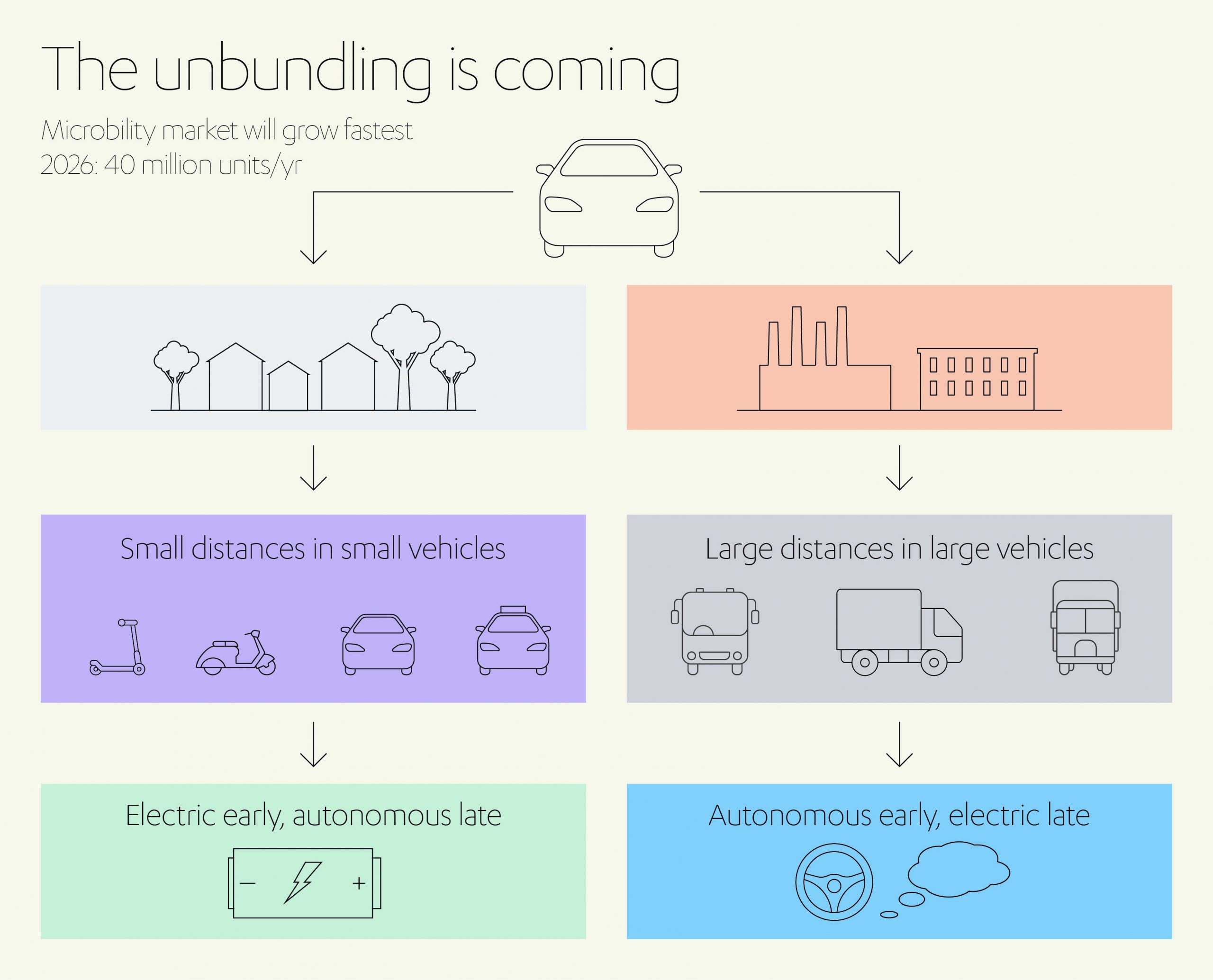
China’s dockless bike-share system, Mobike claims to have doubled access to jobs, education and healthcare among traditionally underserved communities[28]. American scooter-sharing firm Bird, meanwhile, achieved 10 million rides in its first year (2017-2018) in Southern California. Over a similar timeframe, rival Lime hit 34 million trips via its fleet of scooters, electric/pedal-assist bikes and car-shares.
Globally, minds are opening to the benefits of electric scooters. Illegal until now on UK streets, local authorities were given permission to begin trialing battery-powered rental scooters from July 4 this year. Initially only over-16s with driving licenses will be permitted to hire the devices, but if the year-long experiment proves a success, more hire scooters will soon be weaving through the public space, and operators such as Lime, Bird, Voi, Wind, Tier, Circ and Dott will be vying to provide them.[29]
Half the world’s population now lives in urban areas, likely increasing to two-thirds by 2050. Surely, therefore, the move to micromobility should be one-way traffic?
And yet, we shouldn’t expect the revolution to be smooth. Many of the start-ups propelling the micromobility revolution have suffered disproportionately during the global lockdown. Several hundred employees of Bird, almost a third of its workforce, were let go in April this year. Lime, and Swedish scooter firm Voi, have also laid off staff as potential customers have been compelled to remain at home[30].
Securing new funding in a post-pandemic world may yet help this nascent industry thrive, as people prioritize private (read: germ-free) mobility.
As scientists accept that air pollution is making the pandemic more deadly[31], electric vehicles (EVs) should continue their upward trajectory, although adoption rates may vary around the world.
In France and the UK, governments will outlaw new petrol and diesel cars from 2040[32]. Denmark is targeting 2030. Mayors of Paris, Madrid, Mexico City and Athens are banning diesel vehicles even sooner – by 2025.
Management consultancy McKinsey & Co. may prove correct, therefore, in forecasting that Europe and China (with ready investment and regulatory support) could lead the EV charge, while the United States (with low oil prices and a slackening of emissions laws) could lag behind[33]. This would be a shame, since America’s EV trend has so far been encouraging, with 2018 sales up 81% on 2017, accounting for more than 1,180,000 EVs on the road by March 2019[34].
Globally, the number of plug-in electric vehicles passed 7.5 million by the end of 2019, including light commercial vehicles. Medium and heavy commercial vehicles add another 700,000 units to the total[35]. Europe led the charge, with growth of 44% over 2018, although a slowdown in EV sales in the United States and China meant overall global growth was lower, at 9% year on year. Nevertheless, by 2030 the IEA expects EVs to comprise 15% of the global fleet[36].
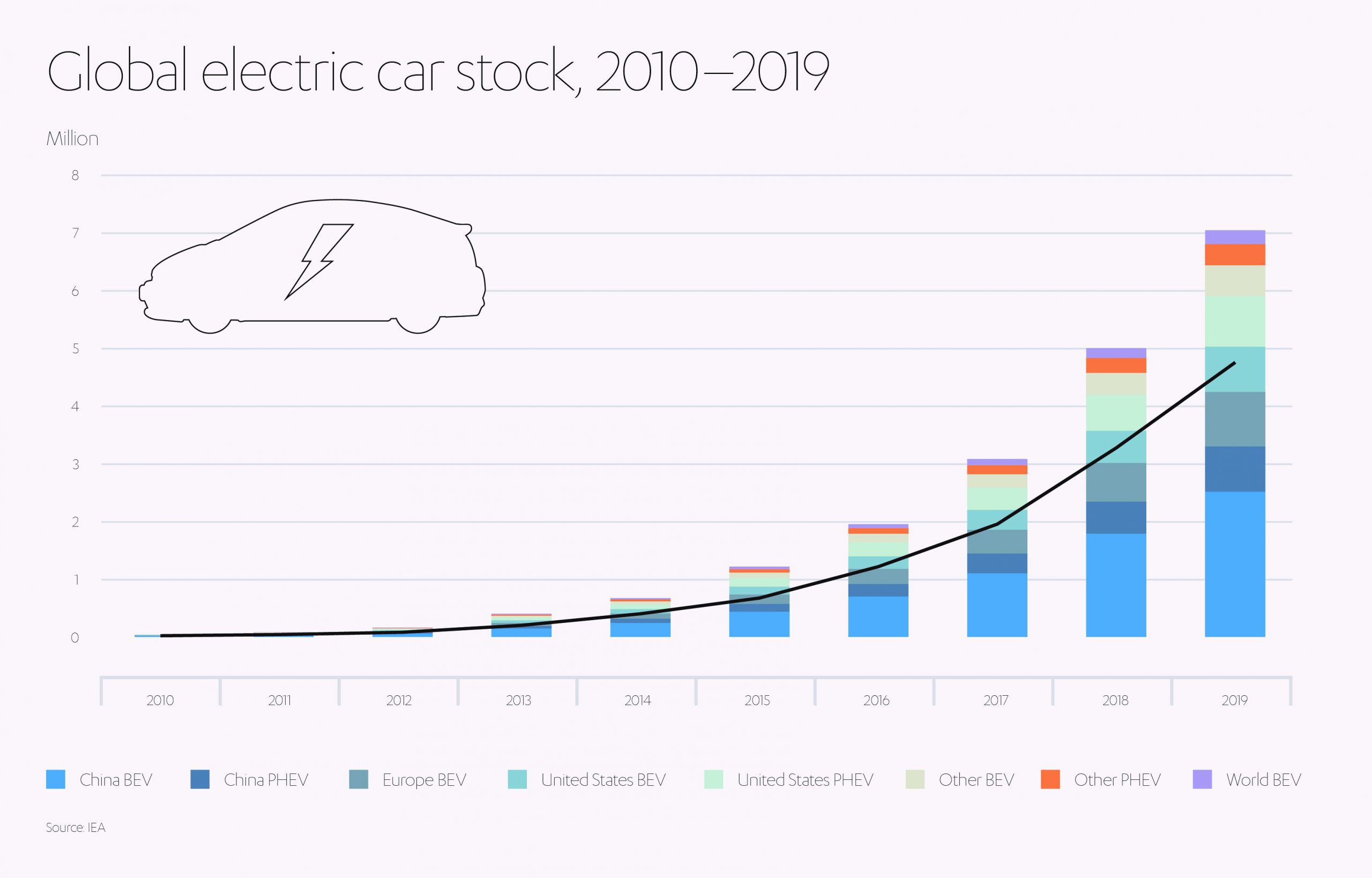
Giant leaps forward are being made in one of the traditional stumbling blocks of EV ownership – battery storage. EVs have traditionally struggled to overcome the dual problems of limited ranges and lengthy recharge times. Fortunately, as discussed in a previous Abdul Latif Jameel Perspectives article, emerging battery technology could help consign such issues to the past.
Revolutionary lithium-ion batteries are proving groundbreaking, being high energy, low cost and long life. Price-wise, battery costs are expected to plunge in cost due to demand, dropping from US$ 176 kWh in 2019 to US$ 62 kWh by 2030[37].

As for charge times, researchers at Pennsylvania State University are currently developing technology that could allow 200 miles of charge in just ten minutes – down from a more typical eight hours[38].
So, the future of mobility is clearly electric. But exactly how mobile do we intend to be?
Business and tourism travel nosedive
Presently, commerce motivates many of the journeys we undertake. In our millions we travel to and from offices daily. We fly across the world to hold business meetings. We buy, sell and negotiate in person.
Or at least, we did.
Suddenly all this changed and gave the campaign for remote working the biggest boost imaginable. Across China, tens of millions have been working from home during the crisis[39]. In the UK, the Office of National Statistics (ONS) says that during April, almost half of UK workers operated at least partly from home offices[40]. The figures are similar in the United States, where one survey showed 20% of company bosses expecting remote working to become permanent for at least one-fifth of their workforce[41].
Globally, broadband speeds are improving, 5G technology is being widely installed, and digital conferencing apps such as Zoom, MS Teams, WeChat Work and DingTalk have undermined the idea that business must be conducted in person.
It remains to be seen just how many businesses gravitate towards permanent home working in the pandemic’s aftermath, but the lure of cost savings on office space and hotel rooms may yet translate to a decline in commuter miles (road and air) in the coming years.
In the short-term, airlines will be squeezed as tourism wilts under the pressure of restricted travel, with holidaymakers reluctant to book trips abroad in a climate of quarantines and possible ‘second wave’ outbreaks. In its recent report, the United Nations World Tourism Organization found 75% of destinations had closed their borders to international tourism[42]. The abrupt halt to tourism is expected to cost the global economy upwards of US$ 1 trillion.
In China, the original epicenter of the outbreak, 70% of flights were grounded at the peak and even now take-offs remain 43% down on the same period last year.
Globally, not all airlines will survive – but don’t expect empty skies to last forever. As The Economist notes, carriers with strong enough balance sheets to survive will simply enjoy less crowded flight routes and greater pricing power[43]. For many operators, the situation may represent significant turbulence – but not a crash landing.
Can such patterns of behavior illuminate what lies around the corner?
Contributing to a more mature mobility future
If the future of mobility is not yet set in stone, we can at least ascertain certain trends, as people awaken to the scientific reality that the environment and public health are inexorably intertwined:
- less travel per head, as non-essential business and leisure trips remain subdued
- a temporary retreat to the relatively virus-free and private confines of the motor car
- a drift toward more sustainable transport options such as buses and trains (underpinned, of course, with smart technology) post pandemic
- the ongoing takeover of EVs in place of petrol and diesel vehicles, particularly as EV prices fall and battery technology evolves
- a surge in hyper-convenient micromobility alternatives, once cash-flow road-humps have been overcome
If the situation remains somewhat opaque, that is because the virus is a ‘live’ event, its scope and ramifications still evolving before our eyes.
Still, what we know so far gives us confidence that across Abdul Latif Jameel, as an active investor in the infrastructure of life, including sustainable mobility solutions, we’re doing our part to help.
We’re proud of our reputation as one of the industry’s leading investors in green motor vehicles. After all, planning for the movement of people is as critical as planning for housing, education and health. We have been Toyota’s distributor in Saudi Arabia since 1955, promoting its flagship EV Prius model and its cutting-edge Mirai hydrogen fuel cell vehicles, among many others.
We are early major investors in RIVIAN, the US-based EV innovator, set to launch its electric pickup truck, in early 2021. The R1T pick-up has three battery size options, the largest being a 180 kWh pack capable of travelling more than 400 miles per charge – a true game-changer.
Joby Aviation’s electric air taxi is another investment with exciting potential in the field of mobility. It is developing a piloted, five-seater vehicle capable of flying 320 kilometers per hour and covering a distance of 240 Km on a single charge. The company completed a Series C funding round in January 2020, including investments from Toyota Motor Corporation and the investment arm of Abdul Latif Jameel to become, at that time, the World’s best funded air-taxi start-up.
On the broader, multinational canvas, creating a greener and future-proofed mobility network will be a debate waged between everyone. Between voters, policymakers, consumers, even our children as the adults of tomorrow.
We need to find a way of championing long-term priorities over the traditional short-term thresholds that limit our interests: quarterly returns, annual profits, electoral terms, or even individual lifespans. This is a challenge of great magnitude, one that will involve overcoming our primal legacy of focusing only on ‘the next meal’. If we want to rewire our world, we must first rewire ourselves.
This will be a journey whose destination is nothing less than a more sustainable and hospitable future for all.
[1] https://www.iea.org/reports/global-energy-review-2020
[2] https://www.carbonbrief.org/analysis-coronavirus-set-to-cause-largest-ever-annual-fall-in-co2-emissions
[3] https://www.iea.org/topics/transport
[4] https://blogs.ei.columbia.edu/2020/03/25/shutdown-clearing-new-yorks-air-dont-cheer-hard/
[5] https://www.theguardian.com/uk-news/2020/apr/03/uk-road-travel-falls-to-1955-levels-as-covid-19-lockdown-takes-hold-coronavirus-traffic
[6] https://www.iea.org/reports/global-energy-review-2020/oil
[7] https://www.nytimes.com/2020/05/18/nyregion/bike-shortage-coronavirus.html
[8] https://blogs.ei.columbia.edu/2020/03/25/shutdown-clearing-new-yorks-air-dont-cheer-hard/
[9] https://www.theguardian.com/politics/2020/jun/20/britain-beyond-lockdown-could-the-country-be-healthier
[10] https://www.theguardian.com/business/2009/jun/16/uk-air-passenger-numbers-decrease-recession
[11] https://www.globalcarbonproject.org/global/pdf/pep/Peters_2011_Budget2010.pdf
[12] https://www.ipsos.com/sites/default/files/ct/news/documents/2020-03/impact-of-coronavirus-to-new-car-purchase-in-china-ipsos.pdf
[13] https://www.theguardian.com/environment/2020/jun/14/congestion-set-to-exceed-pre-lockdown-levels-as-cars-crowd-back-on-to-uk-roads
[14] http://www.metrovancouver.org/services/regional-planning/PlanningPublications/WhereMatter-POLICYBRIEF.pdf
[15] https://www.smartcitiesworld.net/smart-cities-news/analysis-reveals-majority-of-uk-pavements-are-too-narrow-for-social-distancing-5339
[16] https://mck.co/3dcc2jQ
[17] https://www.theguardian.com/world/2020/apr/21/milan-seeks-to-prevent-post-crisis-return-of-traffic-pollution
[18] https://www.climateassembly.uk/news/interim-briefing-post-lockdown-steps-aid-economic-recovery-should-drive-progress-net-zero-target/
[19] https://www.independent.co.uk/voices/coronavirus-uk-cycling-new-york-wuhan-pollution-driving-a9484976.html
[20] https://www.bloomberg.com/news/articles/2020-02-18/paris-mayor-pledges-a-greener-15-minute-city
[21] https://www.polisnetwork.eu/article/euractiv-four-cities-call-for-multi-billion-euro-clean-bus-fund/?id=122824
[22] https://www.goteborg.com/en/convention-bureau/sustainability/sustainable-transport/
[23] https://new.abb.com/news/detail/55577/abb-and-volvo-to-electrify-gothenburgs-city-streets
[24] http://www.bbc.com/travel/story/20200223-is-gothenburg-europes-greenest-city
[25] https://www.nationalgeographic.com/science/2020/05/coronavirus-your-daily-commute-will-never-be-the-same-cvd/?hlkid=420cd52137bf49ccbf3683842d2c13b0&hctky=11595533&hdpid=cd7debef-6f65-4485-ac80-dfe8bf5a907a
[27] https://time.com/2974984/finland-helsinki-private-car-obsolete-environment-climate-change-transportation/
[28] https://www2.deloitte.com/us/en/insights/focus/future-of-mobility/micro-mobility-is-the-future-of-urban-transportation.html
[29] https://www.gov.uk/government/news/rental-e-scooter-trials-to-be-allowed-from-this-weekend
[30] https://www.bbc.co.uk/news/technology-52091615
[31] https://www.theguardian.com/world/2020/may/04/is-air-pollution-making-the-coronavirus-pandemic-even-more-deadly
[32] https://www.unenvironment.org/news-and-stories/story/gearing-change-transport-sector-feels-heat-over-emissions
[33] https://mck.co/3dcc2jQ
[34] https://www.eei.org/issuesandpolicy/electrictransportation/Documents/FINAL_EV_Sales_Update_April2019.pdf
[35] https://www.ev-volumes.com/#:~:text=At%20the%20end%20of%202019,and%20mostly%20as%20large%20buses
[36] https://www.iea.org/data-and-statistics/charts/electric-car-market-share-in-the-sustainable-development-scenario-2000-2030
[37] https://about.bnef.com/electric-vehicle-outlook/
[38] https://pod-point.com/guides/driver/how-long-to-charge-an-electric-car
[39] https://www.bbc.com/worklife/article/20200309-coronavirus-covid-19-advice-chinas-work-at-home-experiment
[40] https://www.ons.gov.uk/employmentandlabourmarket/peopleinwork/employmentandemployeetypes/articles/technologyintensityandhomeworkingintheuk/2020-05-01
[41] https://www.nationalgeographic.com/science/2020/05/coronavirus-your-daily-commute-will-never-be-the-same-cvd/
[42] https://www.unwto.org/news/covid-19-restrictions-on-tourism-travel
[43] https://www.economist.com/business/2020/03/15/coronavirus-is-grounding-the-worlds-airlines





 1x
1x

 Added to press kit
Added to press kit


